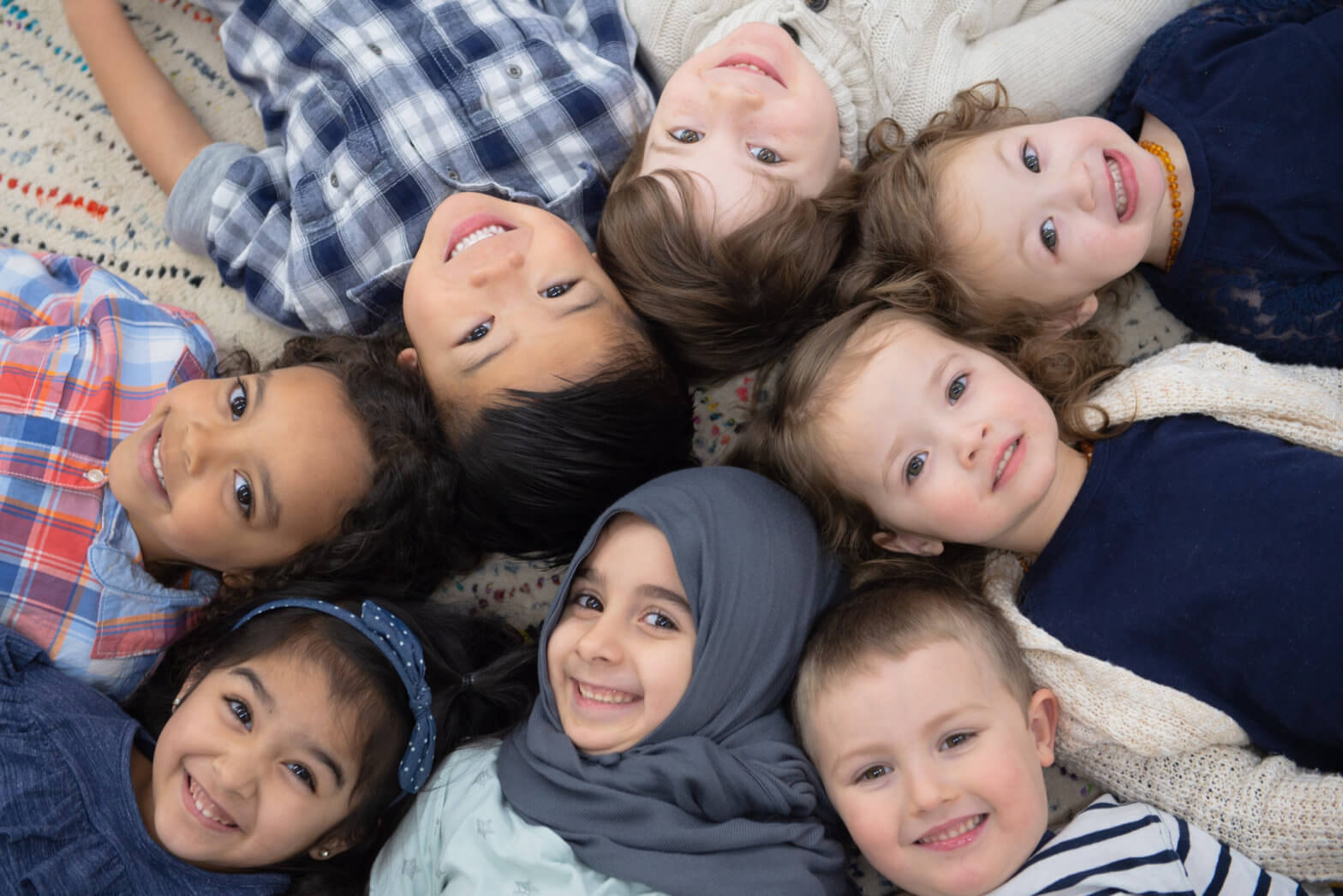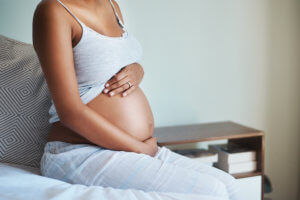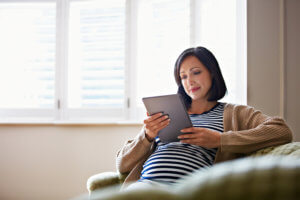Adoption is an act that many people have varying opinions and views about. When the internet is full of misleading information, determining which adoption facts and stats are accurate can seem like an impossible task.
For a pregnant woman, researching her options for an unplanned pregnancy is difficult enough — let alone having to decipher what information is factual, opinion-based or just flat-out incorrect.
To make the research process easier, we’ve compiled these adoption statistics and facts.
With a trusted resource for factual information, you can gain peace of mind. If you’re considering placing your baby for adoption, the statistics, facts and general adoption knowledge included in this guide can give you a better understanding of the adoption process and the opportunities it provides for you and your baby.
You can always contact a professional with any questions you have about your unplanned pregnancy or adoption. In the meantime, continue reading this guide to find the truth behind some of the most common myths or incorrect statistics about adoption.
Adoption Misconceptions — How Adoption Statistics Prove Them Wrong
When it comes to adoption, there are still many different misconceptions and stereotypes about the process:
“Adoption is not very common.”
“Children grow up to hate their biological parents and resent being adopted.”
“You have to keep the adoption secret so the child never knows they were adopted.”
“Birth mothers who ‘give up’ their child take the easy way out.”
“Adopted children are less likely to succeed.”
These are just some of the most common myths prospective birth mothers may see or hear about adoption. However, they’re not actual facts about adoption.
Although statistics can sometimes seem like a blob of numbers and percentages, they can also paint a picture of factual evidence and educate those with incorrect views about adoption.
Let’s dive deeper into these falsehoods and determine the truth.
Misconception: Adoption is not very common.
Here’s the truth:
- Adoption rates show around 140,000 children are adopted in the United States each year.
- There are 1.5 million adopted children in the United States.
- 100 million people have an adoptee in their immediate family.
- 60% of Americans have had experiences with adoption personally or through their family or friends.
Although “common” can be somewhat of a relative term, these adoption statistics shine light on the significant impact adoption has on the United States population. With more than 60%t of Americans having a family member who has adopted or been adopted, adoptions are not secret, taboo processes like they were in the past.
Misconception: Children grow up to hate their biological parents and resent being adopted.
- Over 90% of adoptees ages 5 and older have expressed positive feelings about being adopted and empathize with their birth mother.
- Studies have shown that informing the child of their adoption situation as early as possible is beneficial for their outlook on their adoption, as well as their feelings toward both biological and adoptive family.
- Over 90% of adoptions include some form of openness.
In the past, poor adoption standards made it hard for an adoptee to understand their biological parents’ decision. Now, with facts about adoption indicating the benefits of post-placement contact, these standards are changing for the better.
In an open or semi-open adoption, the prospective birth parent(s) and adoptive family agree on the type and amount of communication to be shared after placement occurs. This can include letters or photo updates, emails, calls and even scheduled visits.
Open adoption can give you the chance to discuss your adoption decision with your son or daughter face-to-face and create a lasting relationship with your child. Each adoption relationship is unique, but open adoption reduces the chances of any resentment or misunderstanding. It also gives you a chance to remain updated and involved in their child’s life.
A healthy relationship between the members of the adoption triad is key to a successful adoption. Contact with the adoptive family gives a birth mother the peace of mind that she made the right decision. It’s a daily reminder that helps her overcome any doubts or regrets. It allows her to feel good about her decision, instead of keeping her decision and story a secret.
Misconception: You have to keep the adoption secret so the child never knows they were adopted.
- 99% of adopted children age 5 or older know they were adopted
This adoption statistic shows how far adoption has progressed.
Adoptions have gone from a secretive, taboo decision to being accepted by society and everyone involved in the process. Children are made aware of their adoption early and often, with positive discussions on why they were adopted. They fully understand the opportunities their adoption has provided them.
Although closed adoptions still occur, they are increasingly uncommon. Even in a closed adoption, the child will still know they are adopted. There are no secrets and no shocking revelation later in the child’s life.
Misconception: Birth mothers are irresponsible parents who take the easy way out.
Just as there are for the adoption process, there are stereotypes out there about birth mothers. These stereotypes cast doubt for women considering adoption, inferring that they will be viewed as a bad person or that choosing adoption is wrong.
These adoption facts prove otherwise.
- Birth mothers who place their children for adoption are more likely to finish school, and less likely to live in poverty and receive public assistance than mothers who parent after an unplanned pregnancy.
- Birth mothers delay marriage longer, are more likely to eventually marry, and are less likely to divorce.
- Birth mothers are less likely to repeat out-of-wedlock pregnancy after an adoption.
- Birth mothers are more likely to be employed by 12 months or fewer after placement has occurred.
- Birth mothers who place their baby for adoption are no more likely to suffer negative psychological consequences, such as depression, than are mothers who rear children as single parents.
There are very few “giving child up” for adoption statistics that truly capture the impact choosing adoption has.
Birth mothers who choose adoption are not “giving up”, nor taking the easy way out. They are making one of the toughest, most selfless decisions of their life out of love for their child. Women who place a child for adoption are not bad people; they are courageous individuals who give their baby the best opportunity at a successful life.
They have goals for not only their child but also themselves, and they realize the only way to obtain these goals is to choose adoption. But there is nothing “easy” about choosing adoption, and these stereotypes undermine the significance of the choice they are making.
Misconception: Adopted children are less likely to succeed.
- Adopted children ages 6–11 are just as likely to read leisurely as non-adopted children.
- Over 85 percent of privately adopted children in kindergarten through high school engage in extracurricular activities such as clubs, sports and volunteering opportunities.
- Adopted children are more likely to live in neighborhoods that are considered “safe,” have all proper amenities and are in good physical condition than are non-adopted children.
- 90% of adopted children live in households with incomes above the national determined poverty line.
There is no correlation between adoption and unhealthy and unhappy l children. In fact, the adoption facts above and current adoption statistics prove the opposite.
A birth mother chooses adoption for her child to provide them with the best opportunities for a successful life; thus, growing up adopted follows suit. Adoptive families love and support the adopted child and want to provide them with the best life possible.
Your Next Steps During Your Unplanned Pregnancy
These are just a few of the misconceptions that exist about adoption. We are aware there are plenty more, and they may be giving you pause about pursuing adoption.
It’s common to have many questions and concerns as you weigh your options for your unplanned pregnancy. Having the right facts about adoption will help ease some of your concerns and confirm you are making an educated decision when the time comes.
An unplanned pregnancy is a lot to handle, but you don’t have to do it alone. No matter where you are at in the decision process, adoption professionals are always there to help. To learn more about the facts and statistics of adoption, you can always contact us to be connected with an adoption specialist, without any obligation or cost to you.
*Sources for information within this article obtained from:
Adoption Network Adoption Statistics
U.S. Department of Health’s 2007 National Survey of Adoptive Parents (NSAP)
McLaughlin SD, Manninen DL, Winges LD, Do Adolescents Who Relinquish Their Children Fare Better or Worse Than Those Who Raise Them? Family Planning Perspectives, 20:1 (Jan. – Feb. 1998), pp. 25-32


![Important Adoption Definitions You Should Know [Complete Guide] Important Adoption Definitions You Should Know [Complete Guide]](https://adoption-for-my-baby.com/wp-content/uploads/2020/11/Definitions-300x169.jpg)






